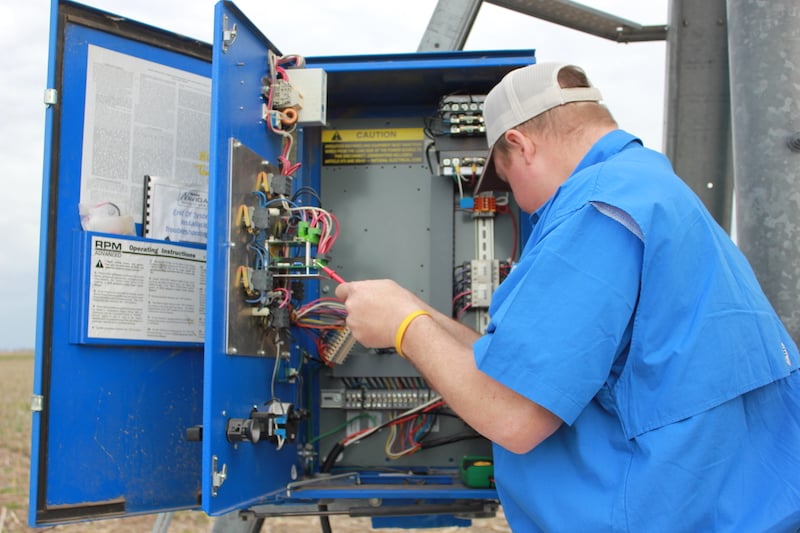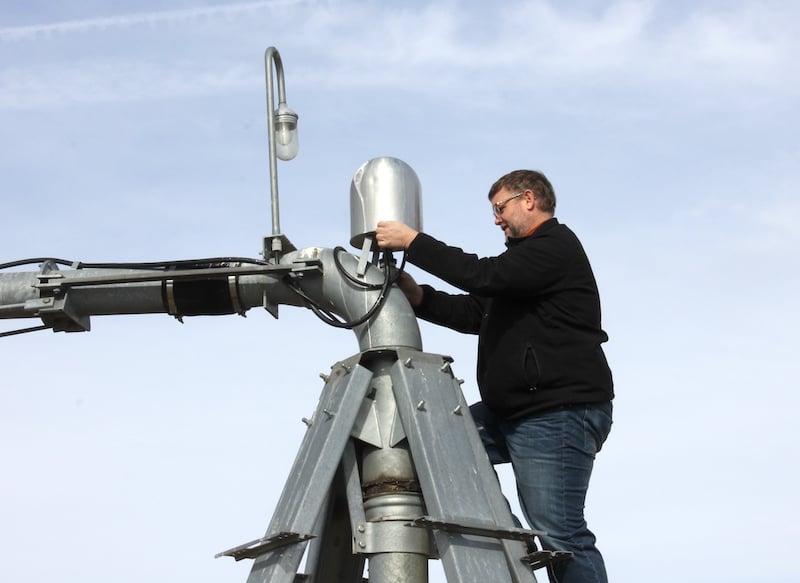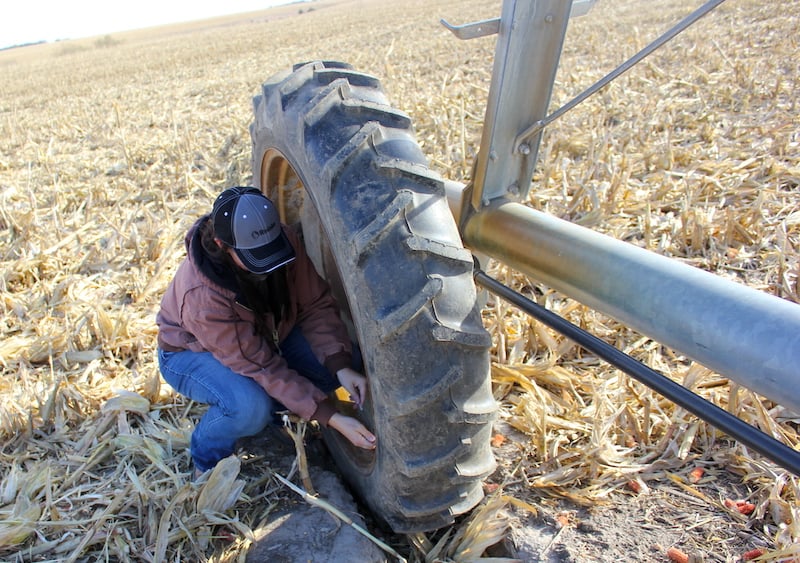With the growing season in sight, it's time to consider how pivot equipment fared the winter. Preventative maintenance in the spring will save you time, money, and yield during the production season.
On many operations, irrigation equipment is among the only assets that sit out in the elements 365 days a year. Over the winter, pivots can be damaged by wind or expand and contract with extreme temperature changes. Some growers even face damage to equipment by wild animals or vandals. Even in mild climates, lack of use can result in leaks, dry rot, and animals and insects nesting within the machine.
University of Georgia Assistant Professor Wes Porter, a UGA Cooperative Extension precision agriculture and irrigation specialist, points out that the average irrigation system may sit idle for more than six months between harvest and the following growing season. Therefore it's worth investing time in inspecting the system to help prevent issues arising during the season, when even a small delay in getting water on may hurt yields.
"We do all of our pre-season maintenance in early spring," says Derek Farnstrom, row crop farmer in Nebraska. "By doing so, we’ve diagnosed smaller problems that would have led to larger ones. This has helped us avoid downtime during crucial periods in the growing season. Spending a little extra money to be proactive with pivot maintenance has saved us money and time in the long run."
Pivot systems differ, so it's essential to refer to the owner’s manual of your specific equipment as you prepare for spring. That said, the basic checklist below can serve as a starting point for preventative maintenance.

Electrical
Turn on the system and check for proper operation in both directions. Inspect for improper grounding of the electrical box and transformers.
Dr. Kevin Heflin, Agrilife Extension agronomy program specialist, stresses the importance of checking fuses and breakers, and keeping the electrical box clear of rodents' nests and other debris. If a rat or field mouse find its way into an electrical box, it may chew and expose wire that can potentially shock you during inspection. Prioritize your own safety: if you see a problem you're unsure of, consult an electrician.
Drive line
Check the seals on the wheel gearboxes and center drive for signs of leakage. If you haven't already done so during the off-season, drain water from the bottom of these units and refill with oil. Grease the gearboxes, and steel U-joints if installed.
Work through each tower toward the pivot point and check the alignment of the system. Misalignment can cause significant problems between pivot sections once the machine is turned on.

Pivot point
Check the pivot point for leaks, loosened bolts, bad fittings, and improperly greased joints. The Zimmatic owner’s manual, for example, recommends greasing the pivot point after every 1,000 hours of operation or once every season, whichever comes first.
End gun
Check that the plumbing is intact on the end gun portion of the pivot. This is another area to check for rodent damage, as well as clogs and degradation of tubing. Make sure the booster pump is working properly and the gun is set correctly.
Sprinklers
“Maintaining and upgrading a pivot’s sprinkler package ranks among the most critical components of annual maintenance," says Mike Boyd, an ag irrigation sales representative with Watson Irrigation in Montana. Missing or damaged components of the sprinkler system create inefficiencies in the water application that will hurt irrigation performance.
To help prevent this, walk the full length of the operating system to look for malfunctioning sprinklers. Check for clogs, worn impact plates, or missing sprinklers. Boyd also suggests keeping up-to-date with new technology and improvements available for the sprinkler heads themselves.

System-wide
Check tire pressure, lug nuts, truss rods, brackets and gear motors on the entire system. A loose bracket could cause the entire pivot to fall, while a flat tire may shut down the system in the middle of a watering cycle. Once you've inspected the entire system for structural problems, turn it on and test the output of water. Non-uniform application of water across the field may result in streaking of crop growth and yield loss.
Of course, even the most thorough preventative maintenance in the spring may not catch every equipment issue heading into the season. Ceres Imaging customers can find some additional peace of mind by reviewing early-season water stress and NDVI aerial imagery: common issues such as clogged or missing sprinkler nozzles that slipped through the pre-season inspection can be detected in the imagery and corrected promptly.
